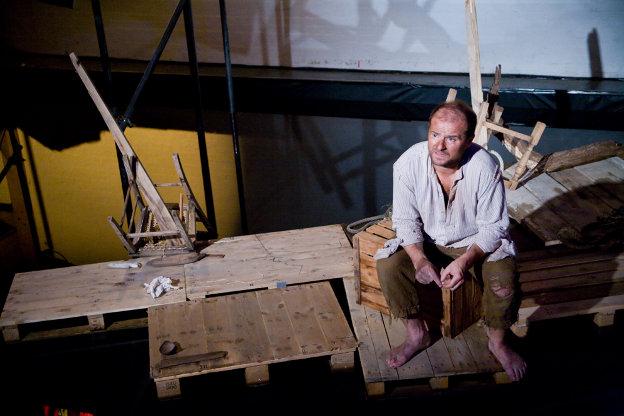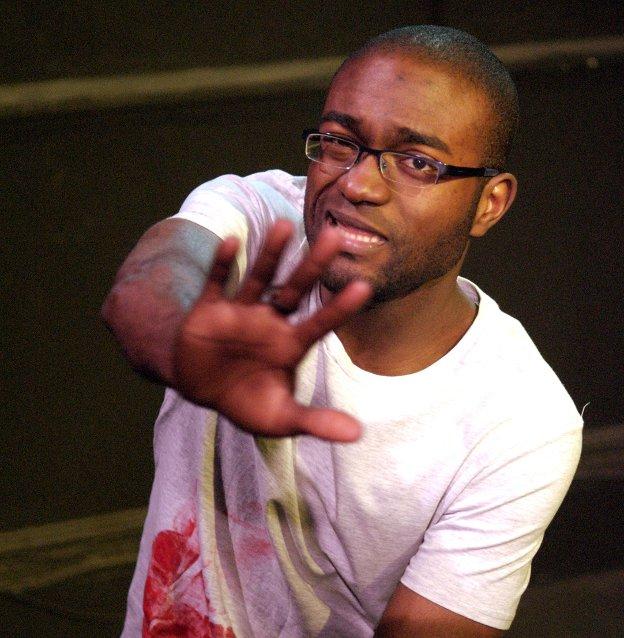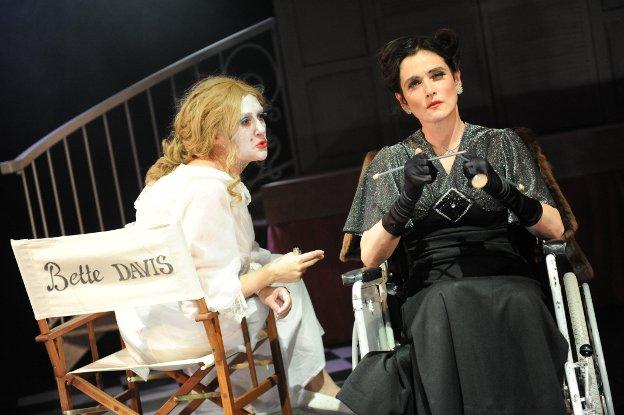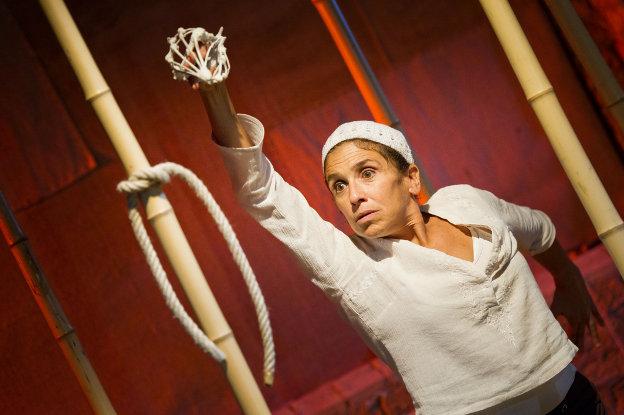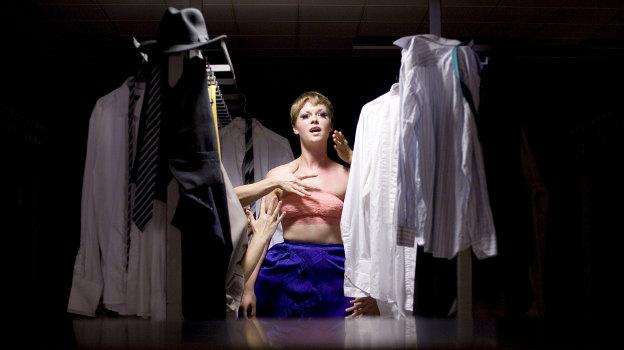Directed and written by Tarek Iskander, deputy artistic director of pop-up venue The Yard and an artist whose previous Shakespeare productions have received critical acclaim, Shiver is an epilogue to Shakespeare’s The Tempest, set twelve years after the events of the original play. Using lines abstracted from the original, but featuring only the characters of Miranda and Prospero,Shiver explores their fractured relationship, recalling memories from the island that continue to disturb them even after all these years.
Inspired by its location in a converted warehouse in Hackney Wick, whose design (by young architects, Practice) uses reclaimed material from the Olympic Park, Shiver plays on the junkyard theme using scrap items to create the set. Designers Miriam Nabarro and Amy Yardley also manage, impressively, to accomplish a complete flooding as well as getting it to rain midway through the performance – a nice touch only somewhat undermined by the visibility of the venue staff turning the taps on and off!
We find the pair completely separated from one another with Prospero, dressed in rags and looking rundown, on ground level, sitting on a set of wooden crates that seem to float on the water like an island. Miranda, on the other hand, is on a raised platform upstage, wearing fine clothes, melancholy as she draws crashing sea waves on a box with chalk.
Despite its overall aesthetic appeal, Shiver isn’t quite up to scratch as an extension of The Tempest. Reworking lines from various characters in the original play, Shiver becomes a rather static show and its approach to the text, oddly, feels rather dated. The show feels stuck somewhere between being a modern take on Shakespeare and an adaptation of the play itself.
The overall effect is, unfortunately, a sense of trying to be clever for the sake of being clever rather than a valid extension of Shakespeare’s original work.

